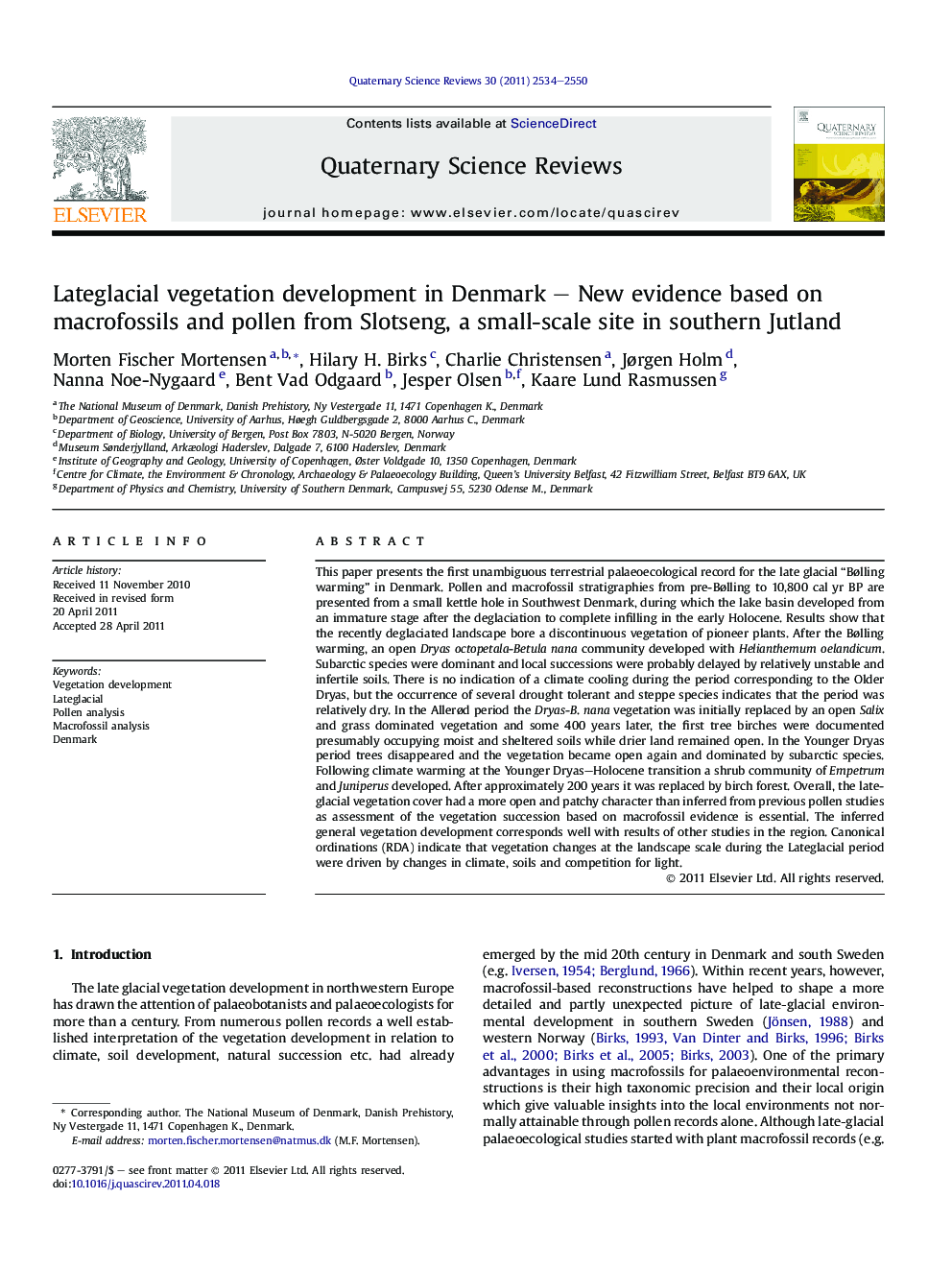| کد مقاله | کد نشریه | سال انتشار | مقاله انگلیسی | نسخه تمام متن |
|---|---|---|---|---|
| 4736715 | 1640908 | 2011 | 17 صفحه PDF | دانلود رایگان |

This paper presents the first unambiguous terrestrial palaeoecological record for the late glacial “Bølling warming” in Denmark. Pollen and macrofossil stratigraphies from pre-Bølling to 10,800 cal yr BP are presented from a small kettle hole in Southwest Denmark, during which the lake basin developed from an immature stage after the deglaciation to complete infilling in the early Holocene. Results show that the recently deglaciated landscape bore a discontinuous vegetation of pioneer plants. After the Bølling warming, an open Dryas octopetala-Betula nana community developed with Helianthemum oelandicum. Subarctic species were dominant and local successions were probably delayed by relatively unstable and infertile soils. There is no indication of a climate cooling during the period corresponding to the Older Dryas, but the occurrence of several drought tolerant and steppe species indicates that the period was relatively dry. In the Allerød period the Dryas-B. nana vegetation was initially replaced by an open Salix and grass dominated vegetation and some 400 years later, the first tree birches were documented presumably occupying moist and sheltered soils while drier land remained open. In the Younger Dryas period trees disappeared and the vegetation became open again and dominated by subarctic species. Following climate warming at the Younger Dryas–Holocene transition a shrub community of Empetrum and Juniperus developed. After approximately 200 years it was replaced by birch forest. Overall, the late-glacial vegetation cover had a more open and patchy character than inferred from previous pollen studies as assessment of the vegetation succession based on macrofossil evidence is essential. The inferred general vegetation development corresponds well with results of other studies in the region. Canonical ordinations (RDA) indicate that vegetation changes at the landscape scale during the Lateglacial period were driven by changes in climate, soils and competition for light.
► We present a radiocarbon-dated, detailed pollen and macrofossil late glacial record.
► We document the first unambiguous terrestrial record of “Bølling warming” in Denmark.
► Resource limitations were severe for vegetation in the deglaciated landscape.
► Vegetation responses to climate change were rarely immediate.
Journal: Quaternary Science Reviews - Volume 30, Issues 19–20, September 2011, Pages 2534–2550